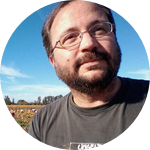105
0
0
Like?
Please wait...
About This Project
We propose to build an inexpensive, open source, portable radio measurement system that can characterize high-value fruit and tree nut crops. While radiometry has been applied to questions of fruit and tree nut quality, to our knowledge, it has not been widely used to measure plant health in situ. Previous research suggests that radio imaging can be used to detect anomalies in plant tissue that are otherwise not visible, and can be used to nondestructively measure plant biomass.
More Lab Notes From This Project

Browse Other Projects on Experiment
Related Projects
Highly-sensitive, real-time enzyme methane oxidation rate measurements using an electrochemical assay
A low-cost, rapid, and highly sensitive assay is needed to measure methane gas oxidation rates by methane...
Engineering of a suction cup stethoscope for non-invasive monitoring of physiological sounds in baleen whales
Baleen whales are large-bodied predators that, despite their critical role in marine ecosystems, our understanding...
Building a better fish: Engineering fish for smarter aquaculture
What if we built a better fish instead of depleting wild fisheries? Natural stocks can’t keep up with demand...

